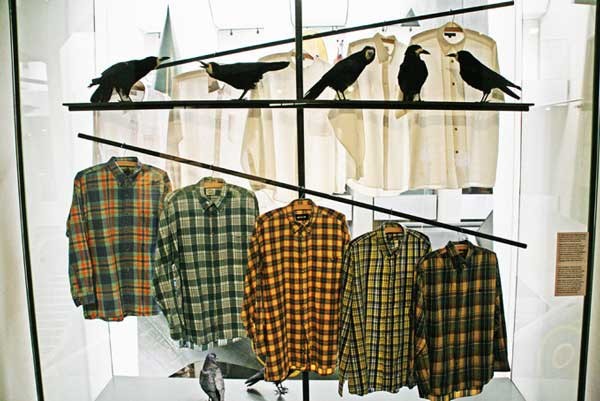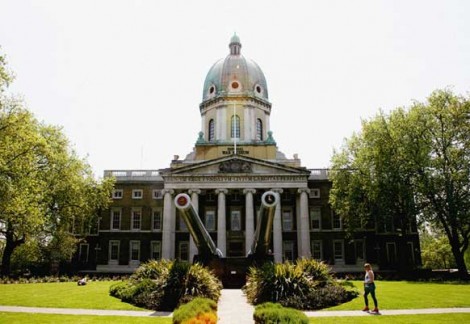Last weekend Field Grey took an inspirational yet somewhat sombre tour of the Imperial War Museum.
The museum displays a vast selection of military uniforms from the First World War right up to today, alongside documenting changes in lifestyle and culture during the periods when Britain was at war. We wanted to learn more about the nuances of military uniforms and explore their impact on culture, lifestyle, manufacturing and design. Here’s what we found.
One of the first examples of uniform in the museum is the Russian Officer’s Greatcoat, owned by Kaiser Wilhelm II, a favourite grandson of Queen Victoria. The blue-grey greatcoat features striking yellow piping and buttons that carry the double-headed eagle emblem of Imperial Russia.
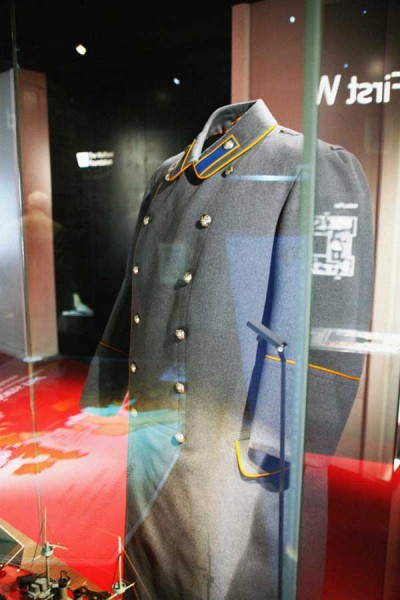
The museum has a huge collection of First World War uniforms and displays more of these than from any other period in history. This is the uniform of a Russian artillery officer.
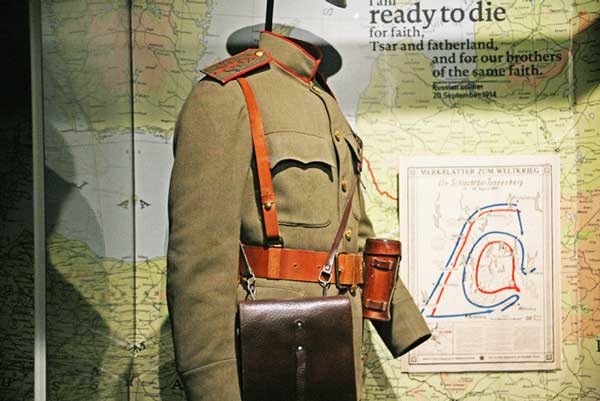
In contrast, this vibrant blue jacket is part of the uniform of a trooper from the Austrian 8th Lancer regiment.
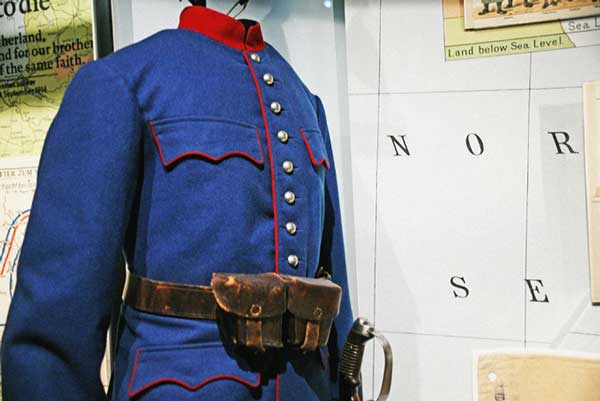
This terrifying linen robe, with hand-painted camouflage, was worn by snipers during the First World War. A wide variety of camouflage clothing schemes were adopted on the Western Front.
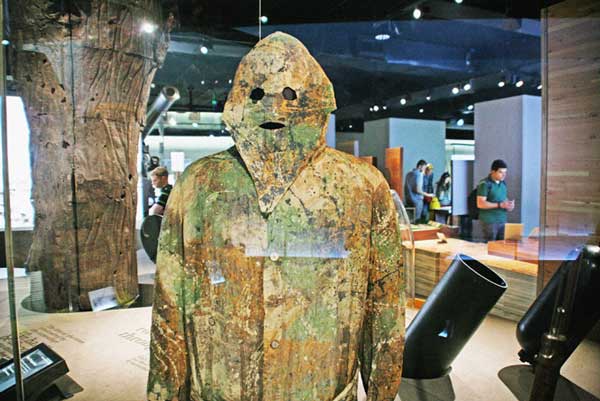
The museum’s collection features a variety of uniform accessories, including helmets, armour and utility items.
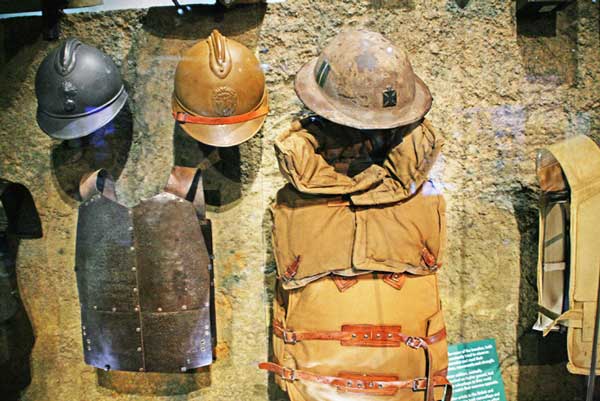
We were overwhelmed by the attention to detail and techinical considerations on these uniforms of the Australian Imperial Force. Note the relaxed tailoring and accessories, considering everything a soldier might need with him.
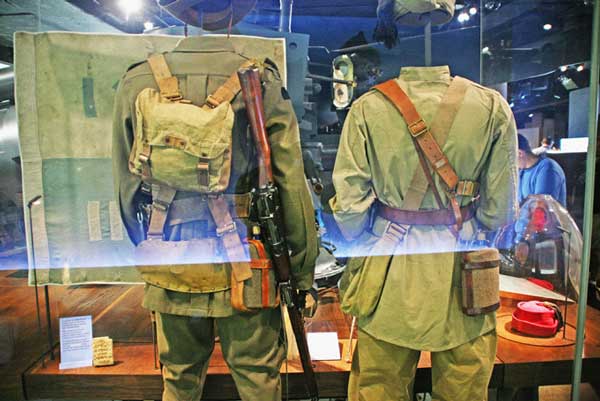
It’s not all military uniforms in the IWM collections. The museum has a vast archive of other uniforms and textiles, which explore other roles essential to the war effort. Below is an example of a nurse’s uniform from the Voluntary Aid Detachments (VAD), the voluntary unit providing nursing services and the largest of any wartime organisation. To the right is an example of ‘hospital blues’ – the clothing worn by injured servicemen as a signal they had been injured serving their country.
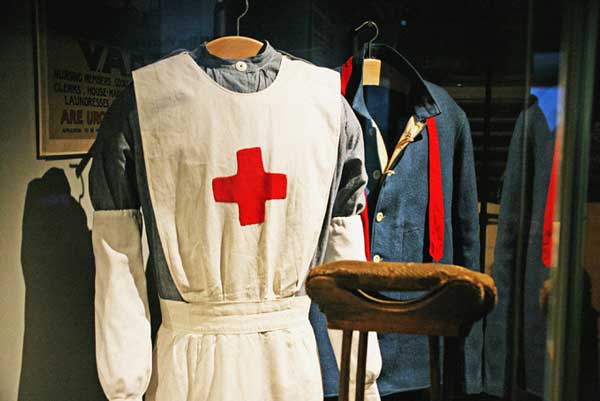
(See Sadie Williams’ re-envisioned WWI nurse’s uniform here)
The site of women wearing trousers and uniforms was revolutionary. On the right here is a blue overcoat worn by typists to protect clothing; on the left, a uniform worn by female van drivers of the Midland Railway. The gaiters for the uniform sit just in front.
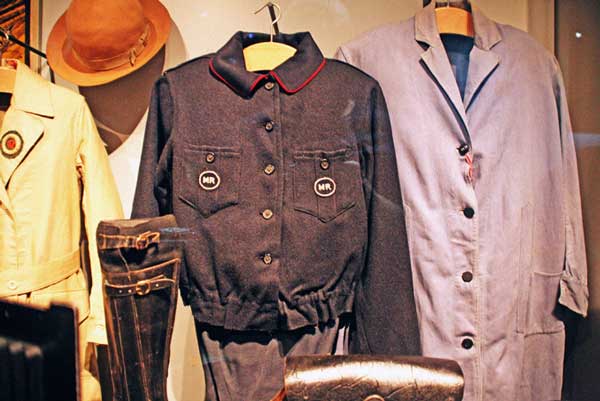
This overall with embroidered patch was worn by women of the Women’s Land Army (WLA).
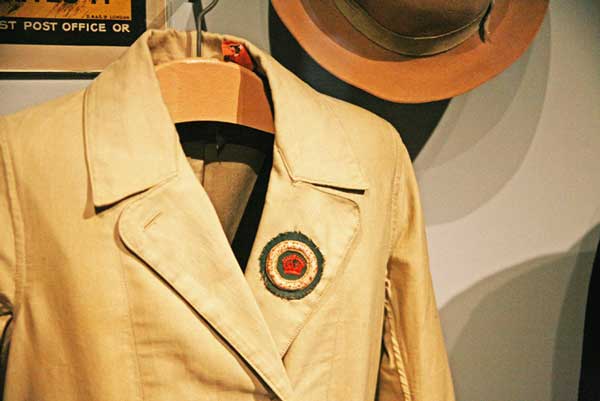
Uniforms of US, Canadian and French officers:
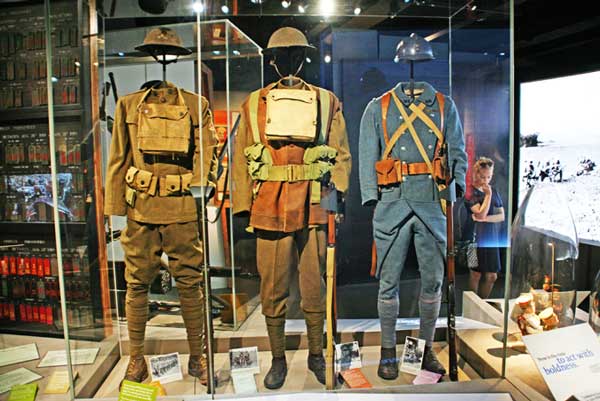
In the moving A Family at Wartime permanent exhibition, an entire house is set up as in the 1940s. The exhibits move to the Second World War. The dresses below were both of interest; to the left is a shift dress made from parachute material, to the right is a utility dress under the CC41 scheme.
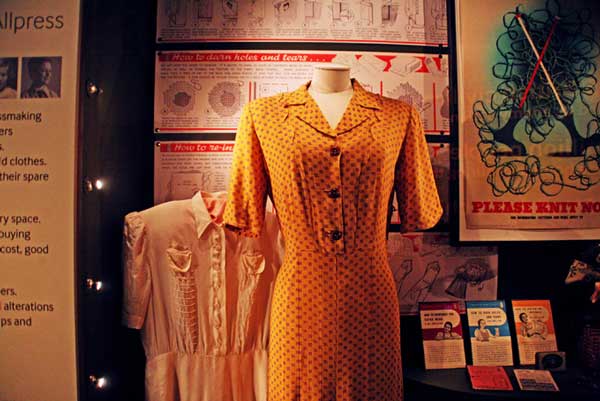
Designs for war and camouflage have little changed in a century. Compare this multi-terrain pattern shirt from 2015 to the linen robe above:
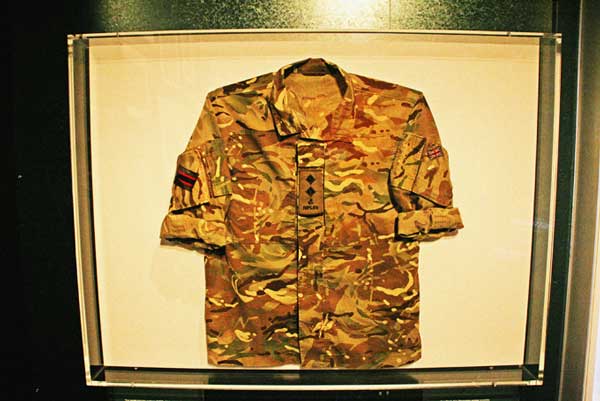
The museum archives pieces and tracks development in the creation of protection for war service personnel. A selection of tin helmets from the Second World War are on display.
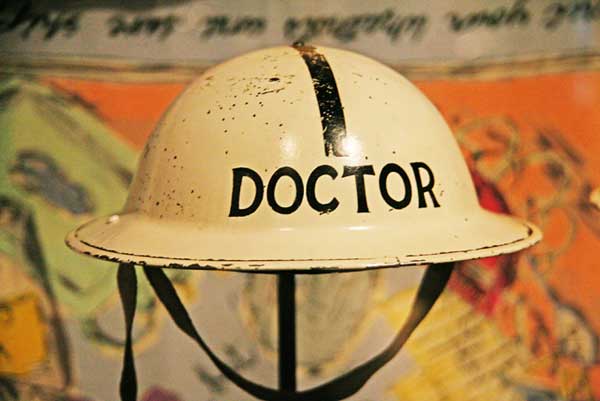
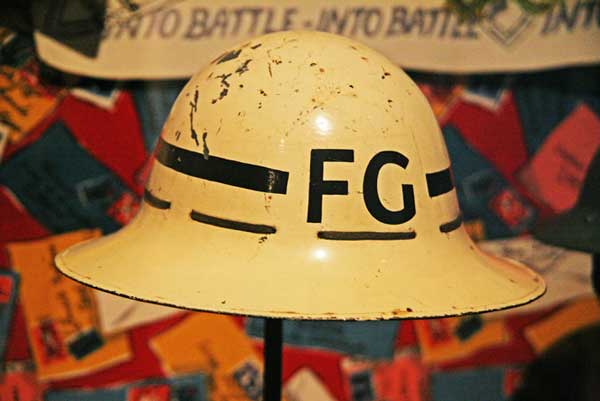
This is a pair of protective wellingtons were worn by Will Pooley, the first Briton to contract Ebola in the fight against the disease in Sierra Leone in 2014.
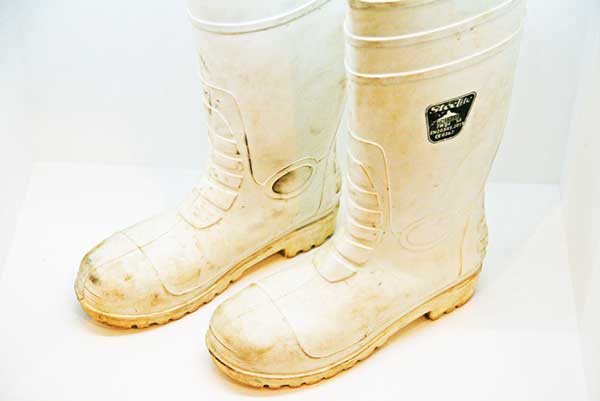
There is also a beautiful display of commemorative silk scarves, something we’ve been interested in researching for some time. Headscarves were extremely popular during the Second World War; these examples were based on propaganda images and slogans.
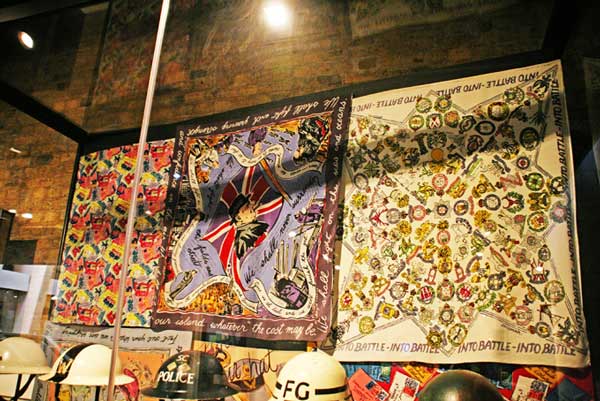
More recent items include this American airman’s leather jacket:
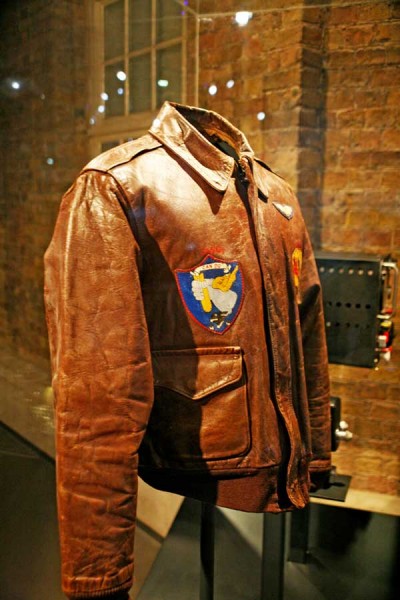
…contrasting with this vibrant orange escape suit, commissioned during Britain’s operations moving to the Trident nuclear system. (This particular suit was left in a pub after a fancy dress party according to the IWM archive…)
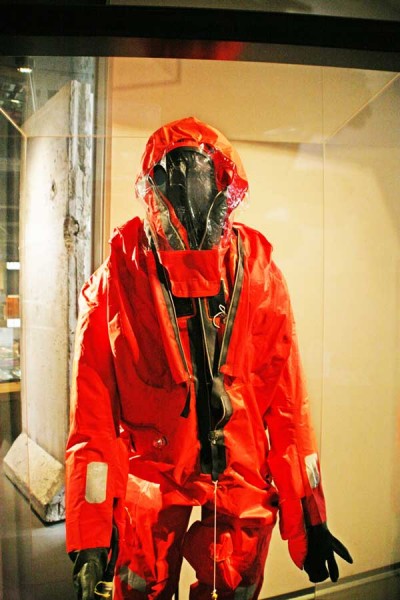
For more information or to explore the IWM archives fully, visit the website.
